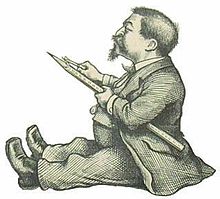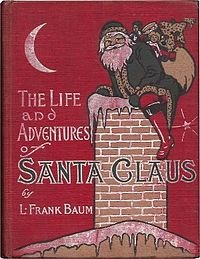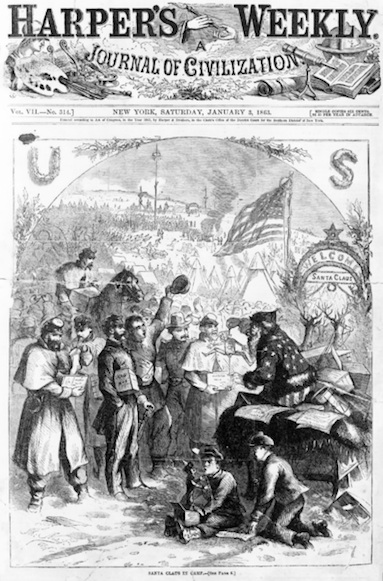With Thoughts of Santa on Christmas Eve…
 On this Christmas Eve, with thoughts of Santa Claus on the minds of boys and girls and those who are young of heart, Emerging Civil War has put in a word with ol’ St. Nick to include all of you on his “Nice” list for the support you’ve shown us this year.
On this Christmas Eve, with thoughts of Santa Claus on the minds of boys and girls and those who are young of heart, Emerging Civil War has put in a word with ol’ St. Nick to include all of you on his “Nice” list for the support you’ve shown us this year.
Most people don’t realize that the Santa Claus we recognize today is actually a legacy of the Civil War. His picture first appeared on Saturday, January 3, 1863 on the cover of Harper’s Weekly.

As sketched by Thomas Nast, Santa wears what are described as red pants and a blue jacket with large white stars. It is also reputedly the first time Santa appears as fat and jolly rather than as a tall, slender man.
In Nast’s sketch, Santa is visiting a somewhat dejected Union army, sitting on the back of a sleigh packed with presents, passing out gifts to soldiers. A sign in the background says “Welcome Santa Claus.”
Santa Claus’s name originally comes from the Dutch Sinterklaas, which is an abbreviation for Saint Nicholas. The Dutch depict Sinterklaas much like a Catholic bishop with a tall hat, full white beard, and a staff.
Depictions of Santa Claus predate Nash’s version, of course, dating back to images of “Father Christmas” from 17th century in England. That depiction appears most famously in Charles Dickens’s A Christmas Carol, published in 1843, when Dickens describes the Ghost of Christmas Present:
clothed in one simple deep green robe…bordered with white fur. This garment hung so loosely on the figure that its capacious breast was bare…. It’s feet…were also bare; and on its head it wore no other covering than a holly wreath, set here and there with shining icicles.
In America, Santa has taken a much different shape. His transformation first began in 1823 with the publication of the poem “Twas the Night Before Christmas,” which appeared anonymously in the Troy, New York Sentinel. (The city of Troy was also the birthplace of Uncle Sam, also made iconic by Thomas Nast’s artwork.)
“His eyes — how they twinkled! his dimples how merry! / His cheeks were like roses, his nose like a cherry!” reads the poem, which goes on to describe “the beard of his chin was as white as the snow.”
The stump of a pipe he held tight in his teeth,
And the smoke it encircled his head like a wreath;
He had a broad face and a little round belly,
That shook, when he laughed like a bowlful of jelly.
The poem also mentions Santa’s sleigh for the first time and gives names for all eight reindeer.
 Santa made other appearances in other places, including a 1902 book by Frank Baum, the author of The Wizard of Oz, called The Life and Adventures of Santa Claus.
Santa made other appearances in other places, including a 1902 book by Frank Baum, the author of The Wizard of Oz, called The Life and Adventures of Santa Claus.
But it was Santa’s appearances in advertisements for the Coca-Cola Company that made his appearance iconic. Prior to that, Santa still appeared in clothes of various colors, but the Coke campaign put Santa in red and white—and he has remained in that outfit to this day.
With any luck, he’ll slide down the chimney at your house tonight!

1 Response to With Thoughts of Santa on Christmas Eve…